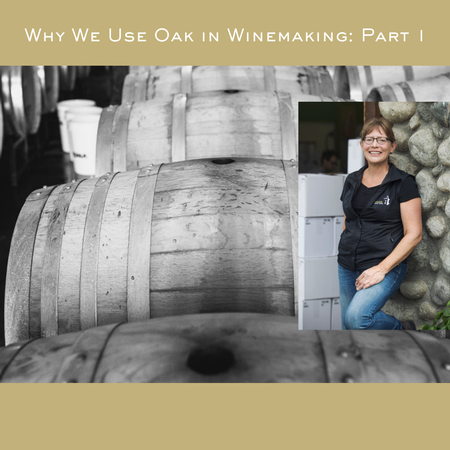Part 1 of 3: How Different Oak Barrels Affect the Flavour and Structure of the Wine.
Oak tanks and barrels have been used in winemaking for millennia, initially as a useful storage vessel.
With the advent of stainless steel, wooden tanks were used less as stainless is much easier to maintain and keep sanitary. Almost immediately it became evident that the wood – specifically oak – contributed to the flavour and complexity of wines (and no, not through microbial spoilage) and so widespread use of oak barrels came back into favour.
Oak barrels can be made from many types of oak, affecting both the flavour and structure of the wine:
French Oak: This wood comes from the “noble” forests in France, which are classified in a similar way to the AOC growing regions in France. It is a specific species, characterized by tight grain, resulting in slower extraction of oak flavours, greater effect on tannin structuring, and better integration with the wine. The flavour contribution is more food-related: vanilla, mocha, caramel etc. Due to the structure of the tree’s vascular system, French oak cannot be cut with a saw, or the barrels will leak. The wood must be split by hand, further inflating the cost. The average cost per barrel is ~$1500.
American Oak: This is wood from a different species of tree, having much looser grain and a different flavour profile, as well as a vascular system which does allow sawing. The flavours are more obviously from wood: spice, smoke, resin, nutty, cedar. The cost is about half that of French oak. As Hillside has shifted to 100% Naramata Bench-grown fruit, the barrel program has shifted away from American oak, which I find over-bearing for the elegant profile of our reds.
Hungarian or Eastern European Oak: Of the same species as French oak, but grown in different climactic regions (usually warmer) producing a bit “wider” grain wood. These barrels fall between French and American oak barrels in flavour, integration characteristics and price. The spiciness of the flavours makes Hungarian oak well-suited to the tropical flavours and aromas of Pinot Gris from warm sites. We have found through trials that 100% Tokaj oak is especially well-suited to pinot gris, imparting a lifted, floral note, and now use it exclusively for Heritage Pinot Gris.
The most commonly used barrels are approximately 225 liter and either Bordeaux or Burgundy (shorter stave, wider head) style. A hybrid barrel can be made using Bordeaux staves, with a Burgundy head, yielding a barrel that holds 40 more liters, but can be used with standard barrel racks and other storage systems. I find that, because of the greater volume to oak ratio, the oak also integrates with the wine better, and I choose these whenever they are available.
Other variables will affect the wine: length of time of air-drying, degree of toasting, whether the heads are toasted, width of the staves, etc.
Because all our barrels come from overseas, barrels must be ordered in May, before the vines have even flowered and we have any sense of expected yield.
How do we decide??? Every barrel can essentially be a 225L trial, so each year I add a few new variables to the mix to test out. It might be a new cooper (barrel maker), new forest or mix of forests, different toast level or method of toasting.
When we work the barrels we keep these trial barrels separate so that we can evaluate their effect on the wine at each stage. It’s not easy – a barrel that you might hate in March can be your favorite barrel six months later, and vice-versa. This of course requires frequent, careful tasting. I know…tough job right?!
In part 2 of this series, I’ll talk in more detail about how I use oak in some of our Heritage Series white wines.

